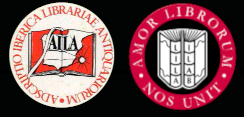


Home |
Temáticas |
Catálogos |
Pedidos |
  |  |
|||||||
|

|
RUGENDAS. (Johann Moritz) HABITANTE DE GOYAS, QUADRO A ÓLEO PINTADO SOBRE MADEIRA. |
|
|
Clique nas imagens para aumentar. MANUSCRITO, SÉC. XVII - MANUSCRIPT, 17TH CENTURY. FINE OF LANDS BETWEEN HARPER & BENNET. [HURSLEY - ENGLAND]Documento redigido no «Court of the Common Bench» também conhecido por «Court of the Common Pleas», situado no Westminster Hall no Palácio de Westminster, a 6 de Maio de 1658. (pode ler-se no documento: from Easter Day in fifteen days in the Year afo[rementioned] Lord one thousand six hundred fifty eight.). Manuscrito de 23x48,5 cm. Com uma folha de pergaminho escrita por mão firme, com letra redonda em tinta castanha, ao longo de 24 linhas na frente e com assinaturas no verso. Este documento trata-se de uma fine of lands. Os autores do processo foram Walter Harper & Thomas Tomkins. Os réus foram Haark Bennett e Elizabeth Bennett, William Todd e Wynyfride Todd, Edward Greenly e Alice Greenly, John Bevan e Johan Bevan, John Bowyer e Elizabeth Bowyer. São referidas propriedades em Hursley, Letton, Mowley, Pembridge, Marston, Bury, Weston e outras. Os juízes que supervisionaram este processo foram Oliver Saint John, Edward Atkyns, Matthew Hale e Hwyh Wyndham. Os autores pagaram aos réus sessenta libras esterlinas. A fine of lands ou final concord era uma espécie de falso procedimento legal que tinha o efeito de transmitir propriedade de uma parte a outra, a troco de uma soma monetária, não se tratando, contudo, de um contrato de compra e venda ou arrendamento. Existiu em Inglaterra desde o século XII até à sua abolição em 1833. O processo dava-se, normalmente, no Court of the Common Pleas — criado no final do século XII, instalou-se em Westminster Hall até à sua extinção em 1880. Este tribunal teria jurisdição sobre todos os assuntos de transferência de propriedade, em exclusivo entre particulares, sobretudo quando existia falta de relevância para o Rei (Coroa). Terá sido o órgão mais relevante para a jurisprudência medieval, embora não tenha sido o mais alto dos tribunais de common law. Nestes processos, o autor (em inglês plaintiff) interpunha uma ação em tribunal para recuperar as terras do réu (em inglês deforciant), alegando que elas eram suas. O réu, por sua vez, simplesmente concordava com a alegação. O autor acordava então em pagar-lhe uma soma de dinheiro pelo acordo, passando a propriedade para o nome do primeiro. O documento era escrito em triplicado numa folha de pergaminho grande, que era depois cortada em linhas onduladas, com a palavra latina chirographum (ocasionalmente substituída por algum outro termo) escrita ao longo do local onde as linhas deviam ser cortadas. Cada parte do acordo retinha uma cópia, que se tornava na escritura de propriedade do terreno do comprador, sendo a terceira (foot of fine) arquivada pelo tribunal como registo do procedimento. Este foi um processo utilizado durante séculos como garantia de autenticidade. Thomas Tomkins (c. 1605 – 1674) foi um político inglês, partidário de Carlos I durante a Guerra Civil Inglesa e membro da Casa dos Comuns por várias vezes, entre 1640 e 1674. Oliver Saint John (1598 – 1673), foi um político inglês e um dos líderes da oposição parlamentar ao governo de Carlos I na Inglaterra. Membro da Câmara dos Comuns entre 1640 e 1653 e Presidente do Court of the Common Pleas entre 1648 e 1660. Edward Atkyns (1587 – 1669), Chief Baron of the Exchequer. Matthew Hale (1609 – 1676), foi um influente advogado, jurista e juiz inglês, reconhecido pelo seu tratado Historia Placitorum Coronæ.
Manuscript. 23x48.5 cm. Sheet of parchment written by a firm hand, in round letters in brown ink, over 24 lines on the front and with signatures on the back. This document is a fine of lands. The plaintiffs were Walter Harper & Thomas Tomkins. The deforciants foram Haark Bennett e Elizabeth Bennett, William Todd e Wynyfride Todd, Edward Greenly e Alice Greenly, John Bevan e Johan Bevan, John Bowyer e Elizabeth Bowyer. Properties in Hursley, Letton, Mowley, Pembridge, Marston, Bury, Weston and others are mentioned. The judges overseeing this case were Oliver St John, Edward Atkyns, Matthew Hale and Hwyh Wyndham. The plaintiffs paid the deforciants sixty sterling pounds. The fine of lands or final concord was a kind of false legal procedure that had the effect of transferring property from one party to another in exchange for a monetary sum, although it was not a contract of sale or lease. It existed in England from the 12th century until its abolition in 1833. The process usually took place in the Court of the Common Pleas created at the end of the 12th century, housed in Westminster Hall until its extinction in 1880. This court had jurisdiction over all property transfer matters, exclusively between private individuals, especially when there was a lack of relevance to the Crown. It may have been the most important body in medieval jurisprudence, although it was not the highest of the courts of common law. In these proceedings, the plaintiff filed a lawsuit to recover the lands of the deforciant claiming that they were his. The deforciant, for his part, simply agreed with the claim. The plaintiff then agreed to pay him a sum of money for the agreement, passing the property on to the plaintiff. In practice, what actually happened was that the plaintiff was about to buy the land from the deforciant, the current owner, and both parties had previously agreed to this transaction. Since this was not a legal contract for the transfer of ownership, it was described extremely vaguely. The money paid for the agreement is often an approximation of the real value of the property. The document was written in triplicate on a large sheet of parchment, which was then cut into wavy lines, with the Latin word chirographum (occasionally replaced by some other term) written along the place where the lines were to be cut. Each party to the agreement retained a copy, which became the title deed to the buyer"s land, the third (foot of fine) being filed by the court as a record of the proceedings. This was a process used for centuries as a guarantee of authenticity. Thomas Tomkins (c. 1605 - 1674) was an English politician, a supporter of Charles I during the English Civil War and a member of the House of Commons on several occasions between 1640 and 1674. Oliver Saint John (1598 - 1673), was an English politician and one of the leaders of the parliamentary opposition to the government of Charles I in England. He was a member of the House of Commons between 1640 and 1653 and President of the Court of the Common Pleas between 1648 and 1660. Edward Atkyns (1587 – 1669), Chief Baron of the Exchequer. Matthew Hale (1609 - 1676), was an influential English lawyer, jurist and judge, recognised for his treatise Historia Placitorum Coronæ. Referência: 2302SB002
Local: Gravureiro Gav. 3-06 Caixa de sugestões A sua opinião é importante para nós. Se encontrou um preço incorrecto, um erro ou um problema técnico nesta página, por favor avise-nos. 
|
Pesquisa Simples




|
||
 |
|||
|